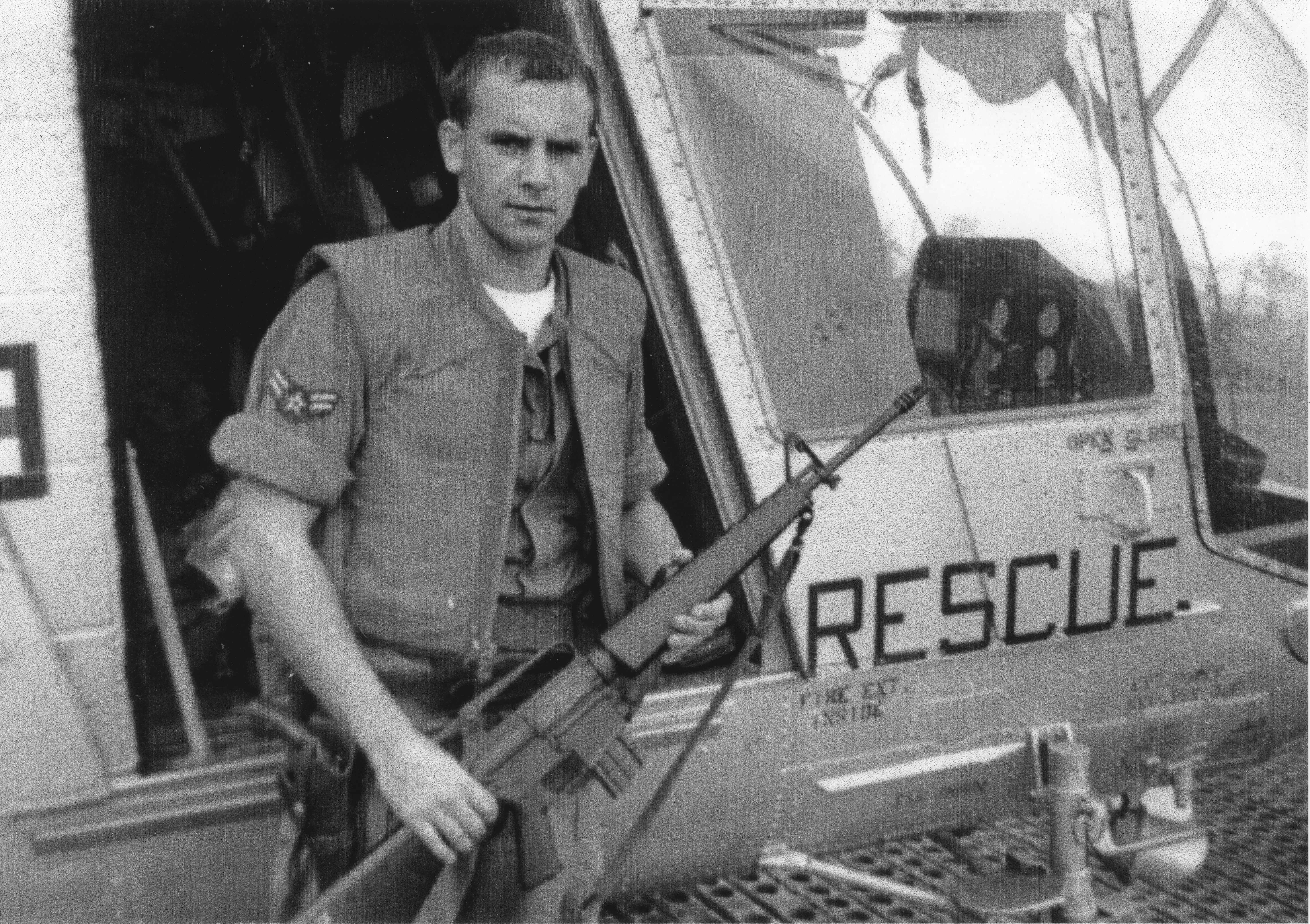The airman stayed behind so that others might live.
William and Irene Pitsenbarger’s visit to the Pentagon on Sept. 22, 1966, was full of mixed emotions. Their son, Airman 1st Class William H. Pitsenbarger, was to become the first enlisted recipient of the Air Force’s second-highest award, the Air Force Cross. Sadly, it was being presented posthumously. “Pits,” as he was known to friends, had been killed in action five months earlier.
Pits was born in Piqua, Ohio, on July 8, 1944. At age 17 he wanted to try for an Army Special Forces position, but his father persuaded him to finish high school. After he graduated in 1962, an Air Force recruiter inspired him to sign up. He broke the news to his parents on New Year’s Eve—and left that very night.
After basic training, he went to Army’s jump school, the Navy’s scuba school, the Air Force’s Tropical Survival School and other places for medical and rescue training to become one of the Air Force’s elite pararescue jumpers, or “PJs,” who are lowered from a helicopter to provide first aid to wounded troops and help lift them out of danger. Pits arrived in Vietnam on Aug. 8, 1965, as a member of the 38th Aerospace Rescue and Recovery Squadron at Bien Hoa, near Saigon. Detachment 6 flew three HH-43F Huskie helicopters, which recovered downed airmen and injured ground troops by hovering above the dense jungle and lowering a Stokes litter, a type of stretcher, so the wounded could be placed in it and winched up to the helicopter.
Pits flew more than 300 missions, risking his life in adherence to the PJ motto: “These Things We Do, That Others May Live.” On March 7, 1966, he volunteered to be lowered by hoist into a burning minefield to recover a wounded South Vietnamese soldier. He received an Airman’s Medal for demonstrating a “complete disregard for his own safety.”
One month later, the Army’s 1st Infantry Division moved into the enemy-filled jungle southeast of Saigon in Operation Abilene. On April 11, some 400 communist soldiers surrounded the 134 men of Charlie Company, 2nd Battalion, 16th Infantry Regiment. Snipers inflicted the first casualties before intense mortar and machine gun fire added to toll. In hours, dead and wounded Americans littered the undergrowth, but Army medevacs could not land because of the dense jungle.
A cry for help went to the 38th Aerospace Rescue and Recovery Squadron. Two of the squadron’s helicopters braved the enemy fire and lowered the Stokes litters. Pits watched as embattled soldiers below struggled to fend off the enemy while trying to load wounded comrades onto the litters. It was a scene of horror and confusion, but Pits told his pilot, “I’m going in.”
Once on the ground, he fearlessly “organized and coordinated rescue efforts, cared for the wounded, prepared casualties for evacuation, and insured that the recovery operation continued in a smooth and orderly fashion,” states the award citation. To make it possible to evacuate one more wounded man, Pits elected to stay on the ground as his helicopter flew the loaded casualties to the hospital. Throughout the desperate night, during which fewer than 20 men of Charlie Company survived, Pits remained with them.
The following day, soldiers found his body. One lifeless hand still held his M16 rifle and the other clutched his medical kit. He had been shot four times.
Nearly 35 years later, Pitsenbarger’s Air Force Cross was upgraded to the Medal of Honor. On Dec. 8, 2000, his parents accepted the medal on behalf of their son, whose heroic deeds in 1966 were the first action by an enlisted man to merit the Air Force Medal of Honor.
Doug Sterner, an Army veteran who served two tours in Vietnam, is curator of the Military Times Hall of Valor, the largest database of U.S. military valor awards.
This article was published in the October 2018 issue of Vietnam.





